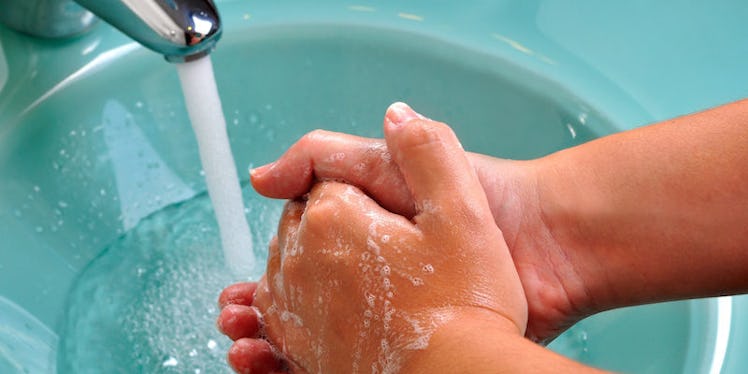
You've Been Washing Your Hands Wrong Your Entire Life, According To A Study
There's a pretty good chance you're not washing your hands as effectively as possible.
According to Motherboard, a study conducted at Scotland's Glasgow Caledonian University found the World Health Organization's six-step method of hand washing got rid of more bacteria on the hands of hospital workers than the Centers for Disease Control and Prevention's three-step method.
The study involved 42 physicians and 78 nurses who work at an urban hospital.
Researchers measured the median bacterial count of the hospital workers after they had treated patients and washed their hands with an alcohol-based rub.
The WHO method reportedly reduced the bacteria count from 3.28 to 2.58 compared to a change of 3.08 to 2.88 with the CDC's method.
Here's the WHO's six-step method provided by Community Eye Health Journal:
1. Rub palm to palm. 2. Rub back of left hand over right palm and vice versa. 3. Rub palm to palm with fingers interlaced. 4. Rub backs of fingers on opposing palms with fingers interlocked. 5. Rub around right thumb with left palm and vice versa. 6. Rub palm of left hand with fingers of right hand and vice versa.
Study lead author and professor of infection prevention and control Dr. Jacqui Reilly noted the three additional steps for the WHO method made hospital workers more reluctant to follow every step.
The WHO method took about 42.5 seconds to complete compared to 35 seconds for the CDC method.
In a statement, Reilly said,
Only 65 percent of providers completed the entire hand hygiene process despite participants having instructions on the technique in front of them and having their technique observed.
More research must, therefore, be conducted to figure out how to increase rates of compliance for the six-step method, Dr. Reilly said.
This study was originally published in the journal Infection Control and Hospital Epidemiology.
Citations: If Youre Not Using the SixStep Hand Washing Method Youre Gross (Motherboard), SixStep HandWashing Technique Found Most Effective for Reducing Bacteria (The Society For Healthcare Epidemiology for America)